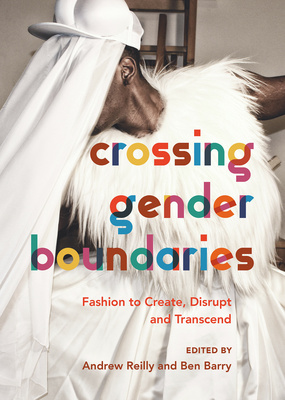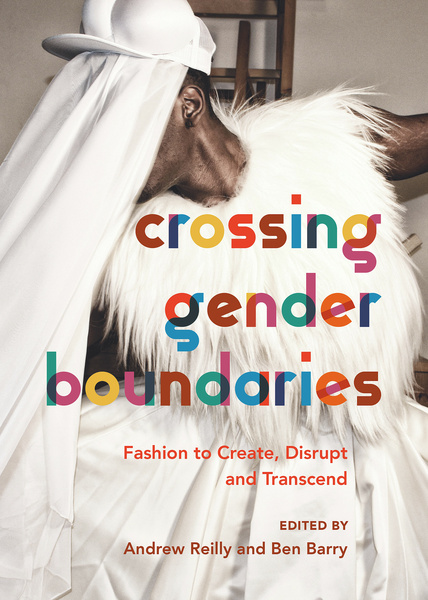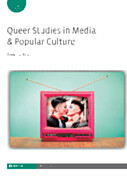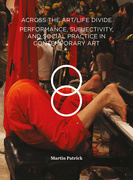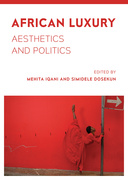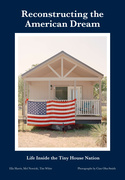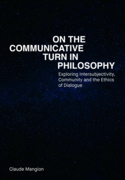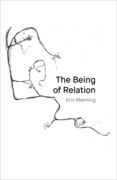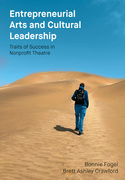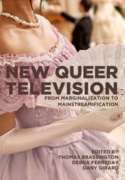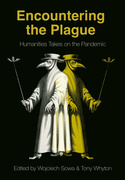Crossing Gender Boundaries (Book)
Fashion to Create, Disrupt and Transcend
This volume presents a collection of the most recent knowledge on the relationship between gender and fashion in historical and contemporary contexts. Through fourteen essays divided into three segments – how dress creates, disrupts and transcends gender – the chapters investigate gender issues through the lens of fashion.
A PDF version of this book is available for free in Open Access: Crossing Gender Boundaries. It has been made available under a Creative Commons Attribution 4.0 International Public License and is part of Knowledge Unlatched.
Edition
This volume presents a collection of the most recent knowledge on the relationship between gender and fashion in historical and contemporary contexts. Through fourteen essays divided into three segments – how dress creates, disrupts and transcends gender – the chapters investigate gender issues through the lens of fashion. Crossing Gender Boundaries first examines how clothing has been, and continues to be, used to create and maintain the binary gender division that has come to permeate Western and westernized cultures. Next, it explores how dress can be used to contest and subvert binary gender expectations, before a final section that considers the meaning of gender and how dress can transcend it, focusing on unisex and genderless clothing.
The essays consider how fashion can both constrict and free gender expression, explore the ways dress and gender are products of one other and illuminate the construction of gender through social norms. Readers will find that through analysis of the relationship between gender and fashion, they gain a better understanding of the world around them.
Andrew Reilly is professor at the University of Hawai‘i at Mānoa, where he teaches courses related to behavioural aspects of fashion and dress. His research and books examine the intersections of gender and sexuality and post-postmodernism in dress. He is founder and editor of the journal Critical Studies in Men’s Fashion, also published by Intellect.
Ben Barry is associate professor of equity, diversity, and inclusion at the School of Fashion and Director of the Centre for Fashion Diversity & Social Change at Ryseron University. His research explores gender inequalities and transformations through dress, with a focus on the men and masculinities at the intersections of queer, disabled and fat embodiments.
Introduction
Section One: Creating Gender
- ‘Bifurcated Garments and Divided Skirts: Redrawing the Boundaries of the Sartorial Feminine in Late Victorian Culture’ – Kimberly Wahl
- ‘“Hard and Straight”: The Creation of Nineteenth Century Masculine Subjectivity through Corsetry’ – Alanna McKnight
- ‘Mirror Epiphany: Transpersons’ Use of Dress to Create and Sustain Their Affirmed Gender Identities’ – Jory M. Catalpa and Jenifer K. McGuire
- ‘Withering Heights: High Heels and Hegemonic Masculinity’ – Elizabeth Semmelhack
Section Two: Disrupting Gender
- ‘Cute Men in Contemporary Japan’ – Toby Slade
- ‘The Politicisation of Fashion in Virtual Queer Spaces: A Case Study of Saint Harridan one of the Pioneering Queer Fashion Brands in the Twenty-First Century’ – Kelly Reddy-Best
- ‘She Was Not A Girly Girl: Athletic Apparel, Female Masculinity, and the Endorsement of Difference’ – Christina Bush
- ‘Gender More: An Intersectional Perspective on Men's Transgression of the Gender Dress Binary’ – Ben Barry and Andrew Reilly
- ‘In-vest-ed Meaning: Gender Ambiguity in Costume Collections’ – Katie Baker Jones and Jean L. Parsons
Section Three: Transcending Gender
- ‘The Politics of the Neutral: Rad Hourani’s Unisex Vision’ – Rebecca Halliday
- ‘Shirting Identities: Negotiating Gender Identity through the Dress Shirt’ – Valerie Rangel
- ‘Why Don’t I Wear Skirts? Understanding Dress Behaviour through Historical Contexts’ – Jung Ha-Brookshire
- ‘Critical Mascara: On Fabulousness, Creativity and the End of Gender’ – madison moore
- ‘Clothes (Un)make the (Wo)man – Un-gendering Fashion (2015?)’ – Hazel Clark and Leena-Maija Rossi
'At the heart of this book is a desire to expose how gender binaries have defined self-presentation for centuries and the impact these practices have had in the development of the fashion industry in western-centric areas. The book also accounts for how we have challenged (or crossed) boundaries and how we must continue challenging, disrupting and transcending the identity oppression created by the strict social structures imposed on many of us in terms of gender identity. This is not the first time the field of fashion studies questions these binaries, but this volume is an excellent resource adding new material and new perspectives corresponding to the global and changing zeitgeist of gender identities. [...] While a more global perspective would be welcomed, this new collection is essential reading in fashion and gender – understood as the social and political understanding and construction of bodies as based on cultural norms and not on biological features. [...] The road to destabilize and transcend the long-established gender binary system is a long one. The essays in this reader relate some successful stories and outline possibilities for a future that may allow us to fully cross gender boundaries.'
'This collection of essays is timely and innovative, drawing on a range of theoretical and methodological frameworks to understand and show the role that fashion and dress have in crossing gender boundaries. [...] This edited collection is exemplary, not only in terms of its content, but also in terms of its form. Scholars thinking about putting together an edited collection may look toward Crossing Gender Boundaries as an example of an excellent edited collection. The essays work well together, but also work well in isolation. This is an impressive collection that recognizes the importance of diversity in the study of fashion, and I am confident that Crossing Gender Boundaries will spark new debates in the ongoing and important critical study of fashion, which is central to how many think about bodies, sexualities, and masculinities.'
'This volume examine[s] the significance of dress and fashion for creating and transcending binary gender distinctions. The studies it comprises represent diverse case studies that explore how dress constructs gender as a situated, appearance- and performance-mediated bodily practice. The panoramic overview of historical and contemporary examples in which gender boundaries maintained or crossed through dress and fashion also guides the structure of this book. . . . [It] highlights how dress and gender are mutually constructive. As the Western concept of gender becomes challenged, redefined and reexamined, this timely volume examines gender- and dress-related issues, while highlighting how gender can be created, disrupted and transcended using fashion clothing, personal style and fashion accessories.'
'The chapters and sections flow very well together, and it is a credit to the editing skills of Reilly and Barry that each chapter is perfectly placed within the book. [...] Overall, the wide range of topics collated by Reilly and Barry gives an extremely interesting overview of both personal and public aspects of the relationship between gender and dress. Chapters range from personal accounts to theoretical and cover both well known and more niche, potentially less well known, designers and fashion trends. [...] Crossing Gender Boundaries is a book which will be attractive to those whose research and interests are in several different fields whether that be historical fashion, contemporary fashion, gender studies, or cultural studies. In fact, this book is such an enjoyable read and is readily accessible that it may even be of interest to the general reader.'
'[Crossing Gender Boundaries] augments the larger body of scholarship on the topic of gender and dress by adding a variety of study areas that are missing from the existing largely white, heteronormative European–American focused literature. [..] This volume is certainly a must-read for readers interested in exploring gender construction – and deconstruction – in fashion studies.'

